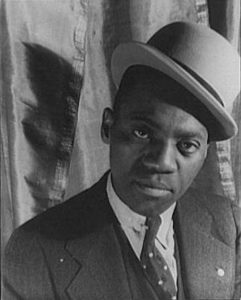
Bill Robinson
Bill Bojangles Robinson was born on this date in 1878. He was a Black tap dancer and entertainer.
Born Luther Robinson in Richmond, Virginia, he was raised by his grandmother after being orphaned as an infant. As a child, Robinson danced for pennies from passersby on the streets. He left school before age eight and ran away to Washington, D.C., where he worked as a stable boy at a racetrack. In Washington, D.C., he observed traveling minstrel shows. He copied aspects of their movement, eventually creating a unique dance style characterized by highly rhythmic, syncopated, and complex footwork that appeared effortless, carefree, and buoyant.
He developed tap dance and soft-shoe routines (tap dances done in soft-soled shoes) in which he proved himself a master of improvisation, able to produce a seemingly unlimited range of percussive sounds. In 1892, Robinson debuted as a professional dancer in a minstrel show called "The South Before the War." He later teamed with George Cooper in a dance and comedy vaudeville routine.
In 1908, Marty Forkins, a successful vaudeville agent, became Robinson's manager and helped him become a vaudeville and musical theater star. Robinson performed in New York City in several Broadway musical revues, including "Blackbirds of 1928" and "Brown Buddies" (1930), "Blackbirds of 1933," and "The Hot Mikado" (1939). In 1930, he went to Hollywood, CA, where he appeared in 14 motion pictures.
His work with American child actor Shirley Temple in four motion pictures. "The Little Colonel" (1935), in which he memorably taught Temple his trademark stair dance; "The Littlest Rebel" (1935); "Rebecca of Sunnybrook Farm" (1938); and "Just Around the Corner" (1938) were particularly popular. Robinson later drew criticism for portraying racial stereotypes in his roles as grinning and acquiescent servants. His last motion picture role was opposite Black singer Lena Horne in the musical "Stormy Weather" (1943), which featured an all-Black cast.
Bill Robinson was renowned for his exceptional skill and originality and was one of the first Black entertainers to achieve widespread popularity across different racial groups in the United States.
The Ghost Walks:
A Chronological History of Blacks in Show Business 1865-1910
Henry T. Sampson
Scarecrow Press (Metuchen, NJ., 1988)